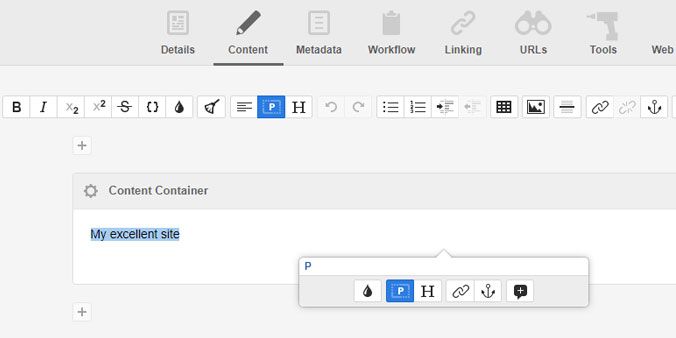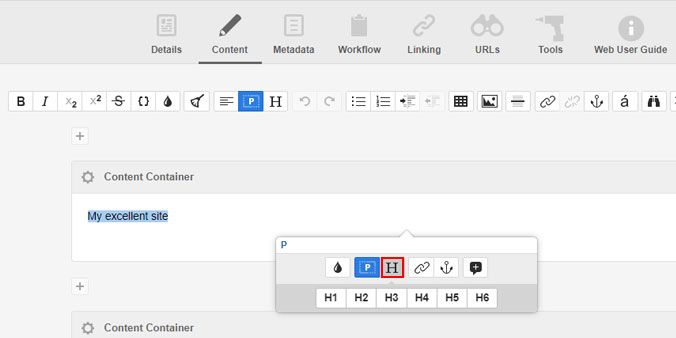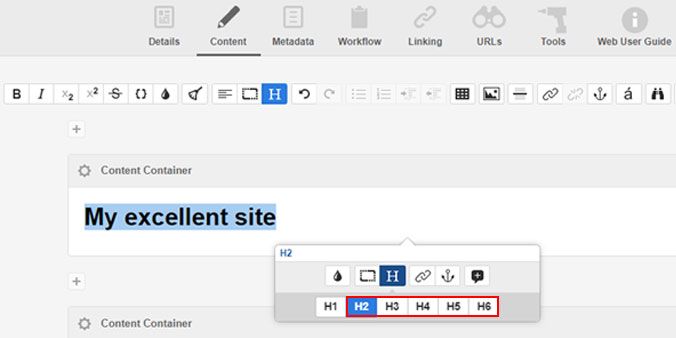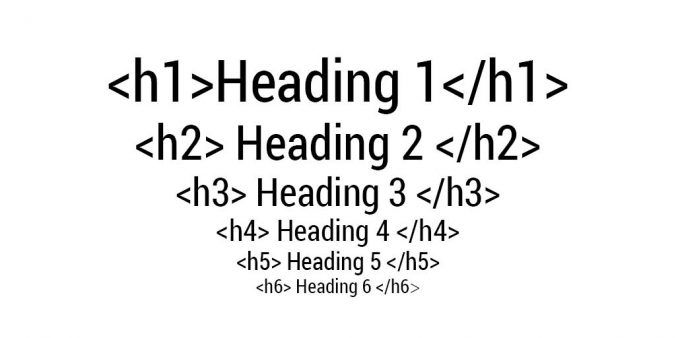Headings help guide your user through your page. Acting as a guide, headings can break up blocks of text and make your page scannable.
Headings help the reader understand what they are about to read, or quickly jump to a particular topic they’re looking for.
What to include in headings?
Headings should be informative and descriptive. They should provide your user with a snippet of information to help decide whether to read the information below.
Headings help define parts of your content by providing structure and organisation. They can be used to define topics but also identify paragraphs and themes.
Why structured headings are important
When adding headings to your page, you should consider them as levels. Each different topic, subtopic or themes should use a heading.
When you add a heading tag to text it will automatically apply styling.
Think of headings as levels of importance.
H1 – most important
H2 – second most important
H3 – third most important
H4 – fourth most important
H5 – fifth most important
H6 – sixth most important
What are heading tags? How do they work?
Headings tags are HTML code which reproduces specific styling when associated with text. The associated styling is pulled from the CSS (cascading style sheet.) This CSS contains a standardised set of styling guidelines for display. This CSS contains a set of instructions for all aspects of the website, including headings.
When looking at the HTML code of text you will see tags such as <h1>, <h2>, <h3>. etc.
When you add a heading tag to text it will automatically apply styling from the CSS to the text.
How to apply headings
Step 1: Highlight text

Step 2: Select the headings tool

Step 3: Select the heading style H2-H6

Headings best practice
- The heading level 1 tag should only be used once. In our CMS the H1 tag is reserved for the page title.
- Always use the next heading level in the structure. Use H1 followed by H2 for a subheading of a H1 and so on. Don’t just use styling based on looks.
- Heading tags can be used to define parts of text. You can use multiple H2 tags as the main topic with H3-H6 including subtopics.
Headings and SEO
Search engines pull information from webpages to help understand what is on the page. To help present this information metadata which pulled includes heading, metadata and body text. As a result, keyword rich headings can help you perform better in search results.
Have questions about your web editing?
Remember, we’re always here to help! To reach out, please:


